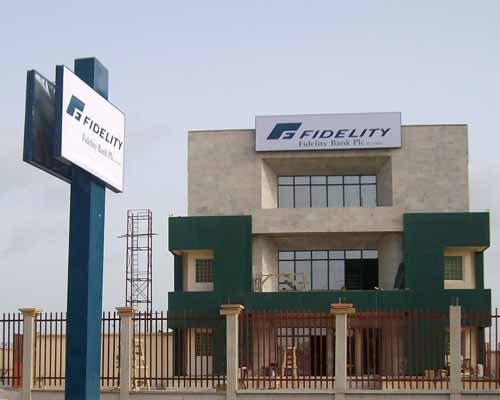Fitch Ratings has affirmed, Fidelity Bank Plc,Long-Term Issuer Default Rating (IDR) rating at ‘B-‘ with the outlook stable.
The global rating firm said in a statement that the Nigerian medium-sized lender Viability Rating (VR) has been also affirmed at ‘b-‘ and Support Rating at ‘5’, while its National Ratings were also confirmed.
Fidelity Bank is a financial institution with a market share of around 4%-5% of domestic loans and deposits. Its small franchise limits the size and scope of business it can undertake and the bank has developed a niche focus on selected corporate business sectors and relatively underbanked sectors, such as the financing of SMEs. Fidelity Bank operates solely in Nigeria.
Lending to SMEs in Nigeria requires more flexible underwriting standards to address their limitations and underwriting standards are adapted to meet the needs of the bank’s niche customer base.
Despite a focus on SMEs, Fidelity Bank’s impaired loans/total loans ratios (5.9% at end-September 2017) are broadly in line with the average for rated second-tier Nigerian banks (around 6.5%). Asset quality trends are favourable, reflecting loan restructuring and some recoveries in 2017. The sustainability of this trend will become clear over time.
Fidelity Bank’s earnings and profitability ratios are in line with the sector averages although performance metrics for second-tier banks vary considerably. There were some positive earnings developments in 2017.
Margins are improving, loan impairment charges are reducing as a percentage of pre-impairment operating profit and investments in technology are helping to improve cost/income ratios.
Fidelity Bank’s funding profile is fairly typical of a smaller Nigerian bank. Franchise limitations make deposit collection more difficult and Fidelity’s loans/deposit ratio hovers around 100%. Depositor concentrations are fairly high, with the top 10 deposits typically representing about 13% of total customer deposits. Low-cost demand and savings deposits represent around 75% of customer deposits, which is positive. Naira liquidity ratios are at levels that are marginally above the 30% regulatory minimum.
Access to foreign currency (FC) was particularly tight for Nigerian banks in 2016 but the bank did not delay any payments on its FC trade-related and bank obligations, even at the height of the liquidity squeeze.
The FC liquidity situation eased in Nigeria throughout 2017 and in October Fidelity Bank raised a senior five-year $400 million bond on the international capital markets. This has eased the bank’s FC liquidity position. Funds raised were partly used to repay $256 million of a $300 million Eurobond bond originally maturing in May 2018.
Loan loss cover ratios (68% at end-September 2017) are slightly lower than peer averages (75% – 80%).
Fidelity Bank meets minimum 15% capital ratios requirements, but the bank’s ability to withstand even moderate shocks may be limited considering below average loan-loss cover ratios, high single name concentrations and potential asset-quality deterioration.
Fidelity Bank’s National Long-Term Ratings reflect its creditworthiness relative to the country’s best credit and to peers operating in Nigeria.
Fidelity Bank’s senior unsecured bonds are rated in line with the bank’s IDRs. In our view, the likelihood of default on these notes reflects the likelihood of default of the bank. The Recovery Rating (RR) assigned to these bonds is ‘RR4’, indicting average recovery prospects.
Fitch believes that sovereign support to Nigerian banks cannot be relied on given Nigeria’s (B+/Negative) weak ability to provide support, particularly in FC. In addition, there are no clear messages from the authorities regarding their willingness to support the banking system.
Therefore, the Support Rating Floor (SRF) of all Nigerian banks is ‘No Floor’ and all Support Ratings (SR) are ‘5’. This reflects our view that senior creditors cannot rely on receiving full and timely extraordinary support from the Nigerian sovereign if any of the banks become non-viable.














